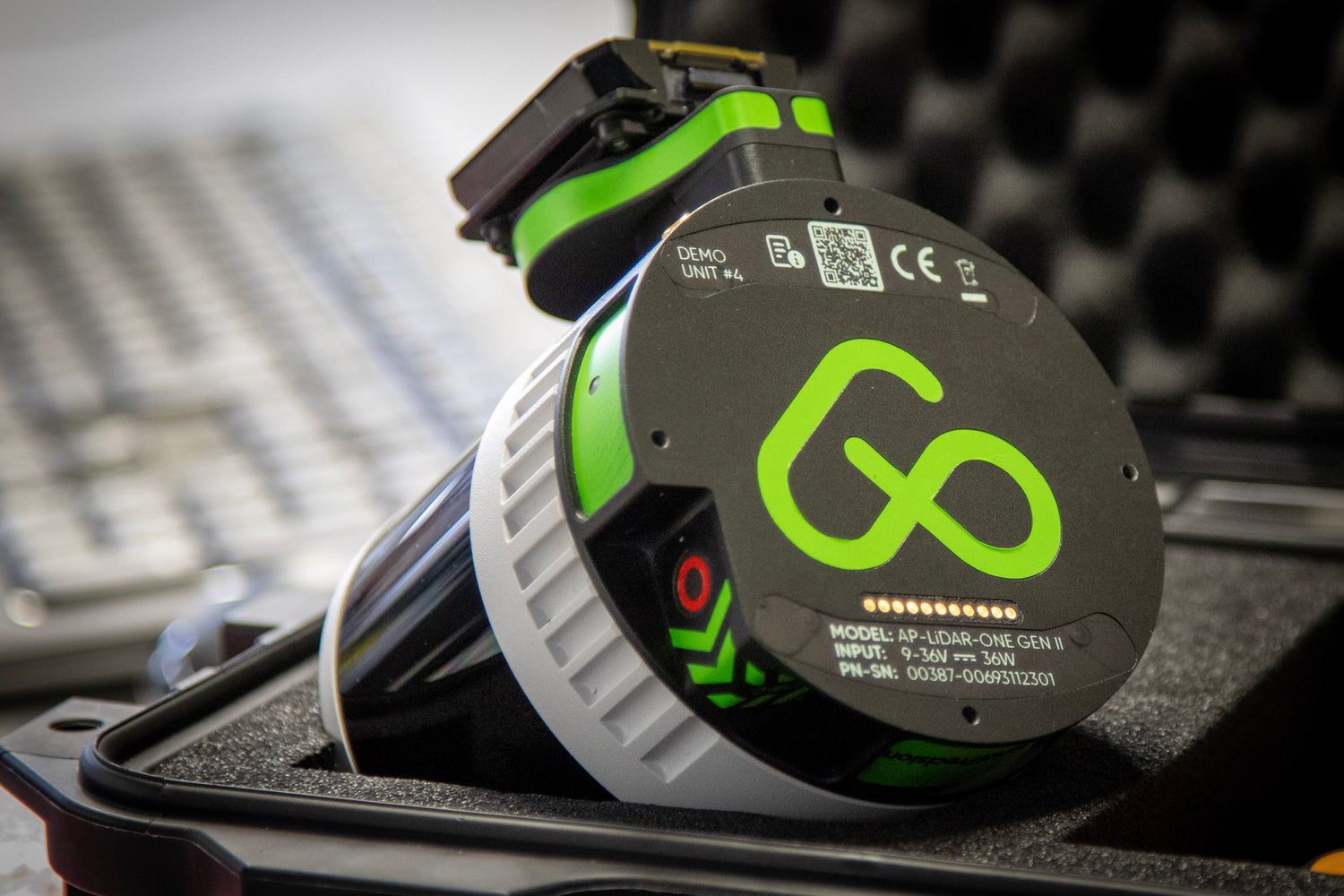
Do tectonic plates and earth's rotation affect GNSS and LiDAR mapping accuracy?
Ana Rouxinol
Modern LiDAR mapping delivers centimeter-level accuracy, enabling engineers and scientists to model terrain, infrastructure, and vegetation in stunning detail. But high-precision LiDAR doesn't rely solely on lasers, it also depends on accurate GNSS and IMU data to determine where each laser pulse was fired and received.
However, the Earth beneath us is not stationary. Tectonic plate motion and subtle variations in the planet's rotation continually change Earth's shape and orientation in space. These natural movements may seem negligible, but they have real implications for georeferencing, LiDAR point cloud alignment, and long-term spatial consistency, especially for projects that compare datasets collected over several years.
How Tectonic Plate Motion Affects LiDAR Georeferencing
The Earth's crust is divided into several massive tectonic plates that shift slowly, typically at rates of 2 to 10 centimeters per year. This ongoing movement subtly changes the real-world coordinates of every point on the surface, including ground control points (GCPs) used for LiDAR calibration.
When LiDAR data are collected, whether by a sensor mounted on an aircraft or drone, on a vehicle, or on a tripod, the position of every laser return is calculated using coordinates from GNSS receivers. These coordinates are based on global reference models such as WGS84 or ITRF (International Terrestrial Reference Frame).
As tectonic plates drift, the physical location of surveyed points moves relative to those global reference frames. Over time, this can cause noticeable coordinate shifts between LiDAR datasets collected at different times.
Example:
- The Australian Plate moves northeast by about 7 cm per year.
- After 25 years, that adds up to nearly 1.8 meters of apparent displacement, enough to misalign repeat LiDAR surveys used for deformation or change detection.
To counter this drift, geodesists use plate motion models and periodically release updated datums (e.g., Australia's transition from GDA94 to GDA2020) that realign coordinates with the current plate position. When properly managed, these corrections preserve centimeter-level consistency across LiDAR datasets collected years apart.
The Role of Earth's Rotation in GNSS Timekeeping
LiDAR accuracy doesn't depend only on position, it also depends on precise timing. Every laser pulse, IMU reading, and GNSS coordinate must be synchronized to the microsecond.
However, Earth's rotation isn't perfectly constant. Changes in tidal forces, atmospheric pressure, glacial rebound, and major seismic events cause tiny fluctuations in the planet's rotation rate and orientation. These variations slightly alter the length of a day, creating timing discrepancies between Earth-based clocks and atomic clocks used by GNSS satellites.
To keep global time synchronized, scientists occasionally insert 'leap seconds' into Coordinated Universal Time (UTC). These adjustments prevent GNSS time from drifting relative to Earth's actual rotation.
In LiDAR workflows, precise GNSS time synchronization ensures that every laser point is tied to the correct position along the aircraft's or vehicle's trajectory. Even a microsecond timing error could translate into several centimeters of positional offset, especially in high-speed airborne or mobile LiDAR operations.
Geodetic Corrections for a Moving Planet
Maintaining long-term LiDAR accuracy requires continuous geodetic correction to account for Earth's motion. Professionals typically rely on the following practices:
- Use dynamic reference frames (ITRF): These models incorporate plate motion and Earth orientation parameters to maintain consistency over time.
- Apply datum transformations: Convert between global (WGS84/ITRF) and regional datums (like NAD83, ETRS89, GDA2020) to account for tectonic motion.
- Regularly update control points: Re-survey GCPs and benchmarks using modern GNSS to ensure local reference networks remain accurate.
- Ensure precise timing: Use GNSS-disciplined clocks and post-processed GNSS trajectories to align LiDAR, IMU, and timing data within microseconds.
These steps are essential for maintaining the geospatial integrity of LiDAR point clouds across time and space.
Why It Matters for LiDAR Applications
LiDAR’s value lies in its ability to deliver high-precision, repeatable 3D data, and that precision depends on consistent spatial and temporal references. When tectonic plate movement and Earth’s rotational variations aren’t accounted for, even minor discrepancies can propagate through critical workflows, reducing data quality and reliability.
Accurate georeferencing and timing corrections directly influence several key LiDAR applications:
- Change detection and environmental Monitoring: multi-temporal LiDAR surveys are used to track erosion, landslides, glacier retreat, vegetation growth, and coastal change. If coordinate systems drift over time due to plate motion, apparent “changes” may actually be positional errors rather than real surface evolution.
- Infrastructure and asset management: LiDAR supports monitoring of bridges, dams, tunnels, and railways for deformation and displacement. Geodetic inaccuracies could mask or exaggerate true movement, leading to flawed engineering assessments or maintenance decisions.
- Urban planning and digital twins: accurate, time-consistent LiDAR data ensure that 3D city models and digital twins remain spatially aligned across multiple updates. Even centimeter-level misalignments can disrupt asset registration and integration with GIS or BIM systems.
- Flood risk and coastal modeling: elevation errors caused by uncorrected tectonic drift can distort hydrodynamic models, affecting floodplain mapping, coastal resilience planning, and sea-level rise assessments.
- Scientific and geophysical research: LiDAR datasets are often combined with GNSS and InSAR observations to study crustal deformation, subsidence, and post-seismic motion. Precise reference frames and time synchronization are essential for accurate cross-sensor analysis.
Ultimately, every LiDAR application that depends on multi-temporal accuracy, deformation analysis, or integration with other geospatial datasets is sensitive to Earth’s ongoing motion. Correcting for tectonic and rotational effects ensures that LiDAR remains a trusted tool for precision mapping, long-term monitoring, and data-driven decision-making.
Without accounting for tectonic motion and timing corrections, LiDAR datasets can drift, misalign, or show false elevation changes, compromising data quality and scientific reliability.
Although tectonic plate movement and variations in Earth's rotation occur slowly, their effects accumulate over time. For high-precision LiDAR mapping, even a few centimeters of drift or microseconds of timing error can make a difference.
By integrating geodetic models, time corrections, and updated reference frames, LiDAR professionals can ensure their data remains accurate, regardless of how the planet beneath them moves.
The Earth is constantly shifting, but your LiDAR data doesn't have to.




